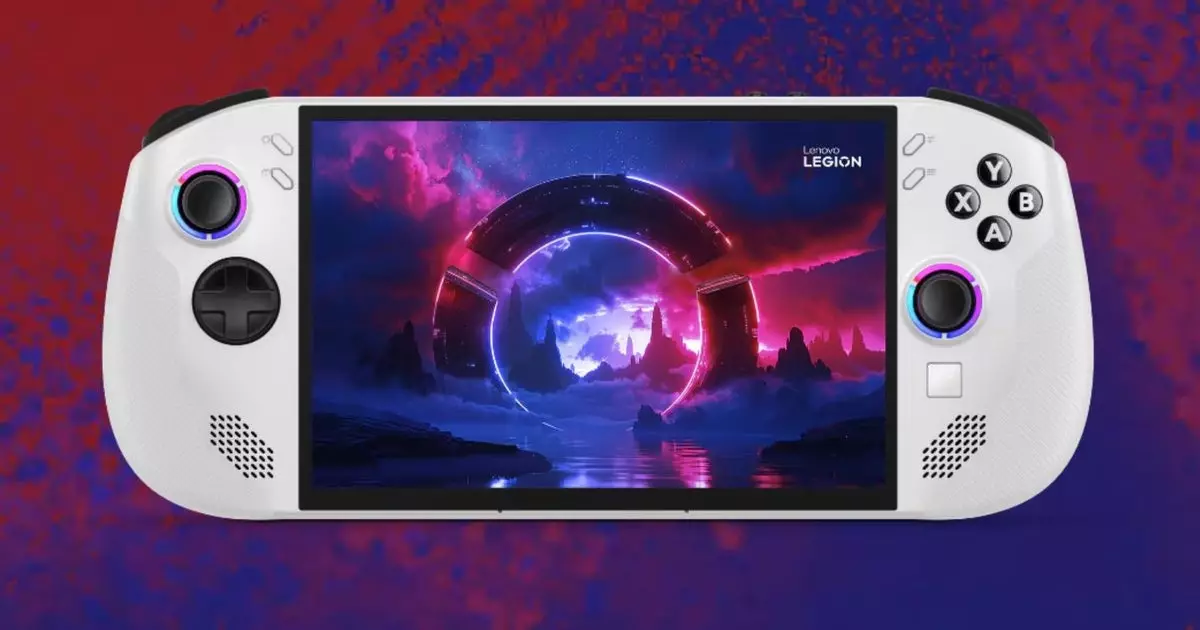The landscape of portable gaming is evolving rapidly, and the announcement of the Lenovo Legion Go S is poised to stir excitement among gaming enthusiasts. This new device is distinguished by its unique features and a design change that sets it apart from previous models, including its predecessor, the original Lenovo Legion Go. In a world where handheld gaming typically leans on Windows-based systems, Lenovo’s transition to SteamOS highlights the shifting tides of user preference, compatibility, and performance in the portable gaming market.
A key aspect of the Lenovo Legion Go S is its choice to use SteamOS, which could revolutionize the handheld gaming experience. While Windows 11 dominates the operating system landscape for general computing, its cumbersome interface often fails to optimize the compact design of handheld devices. SteamOS, on the other hand, is tailored for gaming, offering superior compatibility for game libraries and a more intuitive user experience tailored for smaller screens and touchscreen interactions. The implications of this decision cannot be overstated; it positions the Legion Go S as a leading alternative to existing options, like Valve’s Steam Deck, potentially attracting gamers looking for a seamless gaming environment outside of Valve’s ecosystem.
With two distinct variations of the device—one powered by Ryzen Z1 Extreme and the other by the newly released Ryzen Z2 Go—Lenovo ensures that users can choose based on their performance needs and budget constraints. While the Z1 Extreme is expected to deliver outstanding performance, the Z2 Go’s lower price point at $599 could cater to a broader audience, emphasizing affordability without sacrificing too much on power.
A notable departure from its predecessor is the physical design of the Legion Go S. The transition to a more streamlined and compact chassis marks a significant evolution in the design philosophy. Dropping the detachable controllers not only reduces weight—from 854g to a more manageable 730g—but also shifts the focus back to traditional fixed controls, which may offer a more familiar gaming experience for many users. The new 8-inch 1200p IPS display with a high refresh rate of 120Hz caters to gamers who appreciate vibrant visuals—an essential feature for immersive gameplay.
Furthermore, the enhancements in battery capacity to 55Wh presents an opportunity for Lenovo to address a significant pain point often associated with portable gaming devices, where insufficient battery life can disrupt the gaming experience. By combining robust hardware with a more efficient display, the Legion Go S aims to deliver longer play sessions, appealing to gamers who prioritize endurance during extended gaming marathons.
The Lenovo Legion Go S’s pricing strategy positions it competitively in the burgeoning market of handheld gaming PCs. At $599 with 1TB of storage, it undercuts the Steam Deck OLED variant and presents itself as a cost-effective solution for gamers seeking high-performance gaming on the go. As the handheld gaming market becomes increasingly crowded, Lenovo’s clear value proposition should resonate with potential buyers who are often price-conscious but unwilling to compromise on features and performance.
The anticipation surrounding the scheduled release dates—January for the Windows version and May for the SteamOS model—creates buzz and offers a glimpse into Lenovo’s strategy of generating sustained interest. While the Legion Go S builds a strong case for itself as a worthy contender, it also faces the challenge of demonstrating tangible performance benefits over established competitors.
Ultimately, the success of the Lenovo Legion Go S will hinge on gameplay experience, performance reliability, and battery efficiency in real-world conditions. If Lenovo can deliver on these fronts, this device may carve a significant niche in a competitive market. As the demand for portable gaming continues to rise, innovations such as those presented in the Legion Go S will be instrumental in shaping the future of handheld gaming devices. As we await more detailed performance reviews, the excitement surrounding Lenovo’s new entry is palpable, representing a promising evolution in portable gaming technology.


Leave a Reply